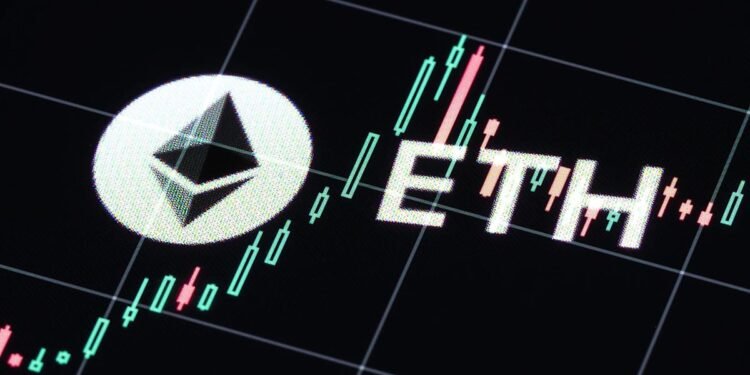The top 10 Ethereum holders control approximately 83.9 million ETH, accounting for roughly 70% of the current circulating supply, which is worth over $300 billion at today’s prices.
If you widen the lens to include staking contracts and large custodial pools, that number climbs even higher.
According to some estimates, these expanded holdings account for up to 52% of Ethereum’s total supply, equivalent to approximately $120 billion in value.
The 200 largest Ethereum wallets now hold over 62.7 million ETH, underscoring the continued top-heaviness of ETH ownership.
However, unlike Bitcoin—where dormant whale wallets like Satoshi Nakamoto’s cast a long shadow—Ethereum’s most oversized holders are anything but idle.
Most actively participate in the ecosystem: staking contracts secure the network, exchange wallets support millions of users, or institutional custodians facilitate everything from ETFs to validator services.
While the top ETH wallets may appear concentrated, they often represent pooled assets, rather than individual mega-whales.
It’s less about hoarding and more about infrastructure, reflecting Ethereum’s unique role in powering DeFi, staking, and the broader Web3 economy.
A person or company does not populate the ETH holder leaderboard; instead, a smart contract, specifically the Ethereum Beacon Deposit Contract, does so.
This is where users lock up ETH to become validators and secure the proof-of-stake network.
It holds an astounding over 36 million ETH, 36% of the total supply, worth roughly $299.5 billion.
Far from idle, these coins are actively staked, powering the Ethereum consensus engine.
This makes Ethereum the biggest holder of the Beacon contract and arguably the most critical one for security and decentralization.
As the largest publicly traded crypto exchange in the U.S., Coinbase is a household name in the digital asset space.
It holds roughly 6.9 million ETH, valued at $23.5 billion, across multiple wallets.
These holdings represent a mix of customer funds, institutional custody accounts, and Coinbase’s cbETH staking derivative program.
With strong ties to Wall Street and growing government interest, Coinbase has positioned itself as Ethereum’s gateway for mainstream finance.
Globally, no crypto exchange handles more volume than Binance.
With operations spread across continents, Binance holds at least 4.2–7.2 million ETH, worth over $15.3 billion, distributed across wallets for trading, staking, and cross-chain bridging.
Its holdings are central to the Ethereum-BNB ecosystem connection, and the exchange remains one of the most significant contributors to Ethereum’s day-to-day liquidity and infrastructure.
A pillar of DeFi, the WETH smart contract contains over 3.2 million ETH, or around $10.9 billion.
This contract wraps native ETH into an ERC-20 format, enabling it to be used seamlessly across DEXs, lending protocols, and Layer 2s.
Far from being a passive holding, the WETH contract acts more like Ethereum’s central bank for DeFi, with locked ETH as collateral for billions in on-chain loans and swaps.
Founded by Digital Currency Group, the Grayscale Ethereum Trust offers accredited investors indirect exposure to ETH through traditional brokerage accounts.
Despite competition from ETFs, it remains one of the largest institutional ETH holders, with ~2.99 million ETH worth over $10.2 billion.
ETHE has been key in introducing Ethereum to conservative capital, even as fee models and regulatory clarity evolve.
Arbitrum, one of Ethereum’s leading Layer-2 rollups, secures user deposits through its bridge contract.
This Layer-2 bridge now holds ~1.8 million ETH, valued at $6.1 billion.
These assets ensure seamless movement between Ethereum’s mainnet and Arbitrum’s faster, cheaper ecosystem, where applications like GMX and Radiant are booming.
Founded in 2011, Kraken has long been a trusted exchange for retail and institutional crypto traders. It holds ~1.6 million ETH, worth about $5.45 billion, across trading accounts and staking services.
Though U.S. regulators recently forced Kraken to wind down its staking-as-a-service program, it remains a significant ETH holder and liquidity provider globally.
Initially known for its commission-free stock trading, Robinhood has aggressively expanded into crypto.
Its ETH holdings now exceed 1.49 million ETH, valued at $5.07 billion, mostly in custodial form for retail users.
While users can’t yet withdraw ETH to self-custody, Robinhood’s massive inflows reflect growing mainstream adoption among first-time crypto investors.
Founded by the Winklevoss twins, Gemini operates a highly regulated crypto exchange and custodian.
One of its top ETH wallets holds ~369,000 ETH, valued at $1.26 billion.
Gemini’s strong emphasis on security and compliance has made it a favorite among institutions, with its ETH holdings reflecting a deep demand from clients.
The Ethereum Foundation’s development arm, ETHDEV, holds ~309,000 ETH (or about $1.05 billion) to fund upgrades, R&D, and grants.
It’s a war chest that supports Ethereum’s technical roadmap and signals long-term commitment to decentralized innovation.
Ethereum’s co-founder remains one of the most well-known figures in crypto—and one of its wealthiest.
Buterin has previously stated that he’s never held more than 0.9% of Ethereum’s total supply.
His main wallet, VB3, currently holds around 244,000 ETH, with additional funds spread across other addresses.
His holdings are estimated at ~280,908 ETH, worth nearly $960 million.
While significant, he ranks outside the top 20 due to the dominance of institutional and smart contract holdings.
Estonian banker and early Ethereum investor Rain Lohmus famously lost access to his ETH wallet—one of the most significant early holdings—shortly after the project launched. Blockchain data confirms that the wallet still holds approximately 250,000 ETH, worth roughly $850 million as of today.
Unless he regains his private keys, that stash will be frozen in time—an unintentional monument to Ethereum’s early days.
While Gemini’s exchange wallet holds ~369,000 ETH, the Winklevoss twins are estimated to personally control between 150,000 and 200,000 ETH, worth $510–$680 million.
Exact figures are hard to verify, but their early investment and ongoing involvement in Ethereum infrastructure make them major players.
Another Ethereum co-founder, Joseph Lubin, went on to found ConsenSys, a key player in Ethereum development and tooling.
While Lubin has never disclosed the full extent of his holdings, estimates based on his early involvement suggest he may hold between 100,000 and 150,000 ETH, which would put his net worth somewhere between $340 million and $510 million.
Canadian entrepreneur Anthony Di Iorio helped fund Ethereum’s 2014 crowdsale and was one of the original co-founders of the project.
While he has stepped away from the spotlight recently, reports suggest he may still hold between 50,000 and 100,000 ETH, valued at between $170 million and $340 million.
Di Iorio has kept a low profile regarding his holdings, similar to Lubin.
A new class of Ethereum bulls is rising—and they wear suits.
Public companies now hold 2,428,001 ETH (over $10 billion) on their balance sheets, a figure that’s surged by more than 545,000 ETH in the past month alone.”
Initially a Bitcoin mining company, BitMine transitioned to Ethereum infrastructure, betting on ETH’s long-term role in staking and Layer 2 growth.
The company currently holds ~3,032,188 ETH, valued at around $12.13 billion, the top corporate ETH holder. The firm has announced plans to build validator nodes and scaling infrastructure.
SharpLink, a sports betting and gaming technology company, has undergone a dramatic transformation.
It pivoted into Web3 infrastructure in 2025, amassing ~838,728 ETH—now worth over $3.31 billion—and is currently the second largest ETH-holding public company.
Its stock soared over 1,000% on the back of this pivot, earning it the title of “Ethereum treasury king.
New York-based Bit Digital made headlines when it sold off its entire Bitcoin stash to pivot into Ethereum.
The firm now holds over 120,306 ETH, worth approximately $504 million, making it one of the most aggressive ETH holders in the public market.
A long-standing blockchain technology firm, BTCS, has consistently accumulated ETH since 2022.
While its current holdings aren’t precisely known, past disclosures put it at ~ 70,028 ETH—about $249 million today.
BTCS continues to focus on Ethereum staking, DeFi analytics, and treasury growth.
Ethereum’s story in 2025 wouldn’t be complete without ETFs.
In just the past 30 days, over 1.2 million ETH—roughly $4.1 billion—have flowed into spot ETH ETFs.
ETH ETF inflows surpassed those of Bitcoin on four separate trading days in July.
The third week of the month saw a record-breaking surge of 588,000 ETH into funds from BlackRock, Fidelity, Bitwise, and others.
With average daily inflows topping $136 million, Ethereum is becoming an increasingly popular institutional darling in the crypto space.
BlackRock’s iShares Ethereum Trust (ETHA) has quickly cemented itself as the dominant player among Ethereum ETFs.
ETHA has already amassed $14.30 billion in net assets, becoming the top spot Ethereum ETF by a wide margin.
Grayscale’s Ethereum Trust (ETHE), once the dominant Ethereum investment vehicle before the introduction of ETFs, remains a major holder despite shifting tides.
As of November 4, it holds $3.63 billion in net assets, although it has experienced sustained outflows, with $14.3 million in net outflows on the most recent day alone.
Cumulatively, ETHE has recorded $4.68 billion in net outflows, underscoring investor migration toward lower-fee alternatives.
Fidelity’s FETH is emerging as a strong contender in the Ethereum ETF race.
As of November 4, it holds $2.6 billion in net assets and has posted the most significant daily inflow among ETH funds.
Grayscale’s second Ethereum offering, labeled ETH, is a newer, lower-cost alternative to ETHE.
With a fee of just 0.15%, it appeals to cost-conscious investors seeking Ethereum exposure in a trust-like structure. As of Nov. 4, its net assets totaled $2.63 billion.
It’s gaining traction fast; if current inflow trends continue, it may soon rival Fidelity’s FETH.
Bitwise’s ETHW rounds out the top five Ethereum ETFs with $410 million in net assets.
Although smaller than its competitors, ETHW posted zero on November 4 and continues to attract attention thanks to Bitwise’s reputation for transparency and research-driven investing.
The fund’s performance, combined with an accessible structure and growing daily volume, makes ETHW a notable player in the space as the Ethereum ETF market continues to expand.
The post Top 10 Biggest Holders of Ethereum and the Billions They Are Worth appeared first on ccn.com.











